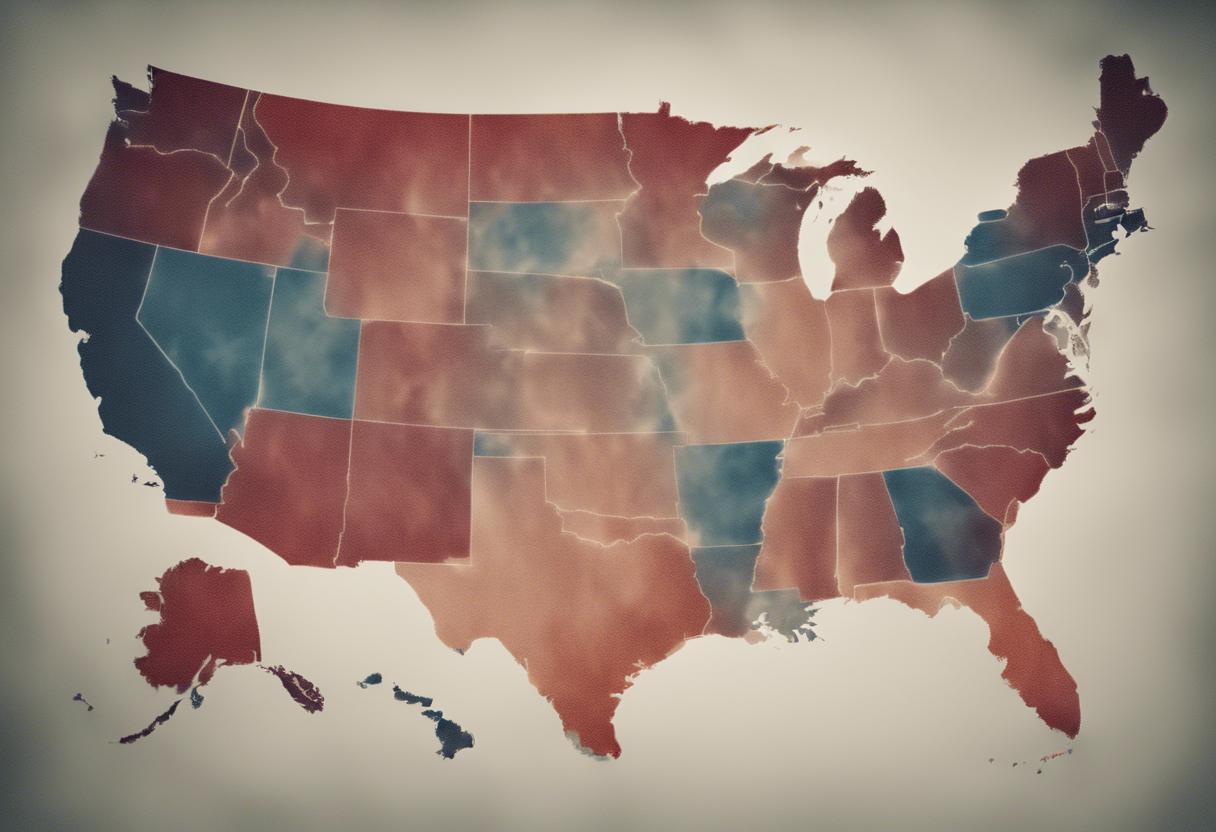The electoral landscape of the United States is largely predictable, as in the run-up to each presidential race, the voting tendencies of many states tend to follow tried-and-true patterns. For instance, Alabama has, in the last 11 consecutive elections, held steady in its support for Republican candidates. The exception being Jimmy Carter in 1976. New York, on the other hand, has favoured Democrats since 1984, the last time it swung Republican for Ronald Reagan.
Yet, the reliably red or blue states do not offer sufficient electoral college votes to secure the 270 votes necessary to claim a presidential victory. Consequently, the fate of any hopeful candidate hinges on the volatile swing, or battleground, states. During each campaign, these states become the focus of both parties attempting to sway the undecided population.
In the 2024 election, the primary swing states include Arizona, Nevada, Georgia, North Carolina, Michigan, Pennsylvania, and Wisconsin. The contests in these states are anticipated to be close, with the gap between Kamala Harris and Donald Trump projected to be mere percentage points. Pennsylvania plays a particularly crucial role, offering 19 electoral college votes in contrast to Nevada’s humble six.
Totaling 93 electoral college votes, equal to 17.3 per cent of all 538 votes, these seven states could definitively dictate which candidate secedes President Joe Biden. Due to the disproportionate significance of these state results compared to the overall national vote count, ardent campaigning efforts and large financial investments are aimed at them.
Importantly, the roster of swing states is not stagnant. In 2020, Florida, Michigan, Ohio, Pennsylvania, and Wisconsin were among the principal battlegrounds. The political climate varies between election cycles and a candidate’s appeal in a given state can rise or fall due to factors like their policy proposals, demeanor, state of origin, running mate selection and ability to connect with the state’s diverse populations.
Over the past three decades, Florida has often been viewed as a fluctuating state in terms of political affiliation. Nevertheless, the recent significant incline in Republican registrations has allowed Trump, a resident of the state with his Mar-a-Lago property, to secure victories in 2016 and 2020. He is currently leading the race, though not by a substantial margin.
Despite not offering a vast number of electoral votes, Nevada exemplifies a swing state, having chosen Republicans and Democrats six times each in the previous dozen elections. Over the same timescale, Arizona has only twice selected a Democrat (Bill Clinton in 1996 and Joe Biden in 2020). Trump is still in the running in this state according to current polls, although this dynamic could shift dramatically in the weeks to come depending on whichever party or candidate successfully captures and galvanises the electorate.

